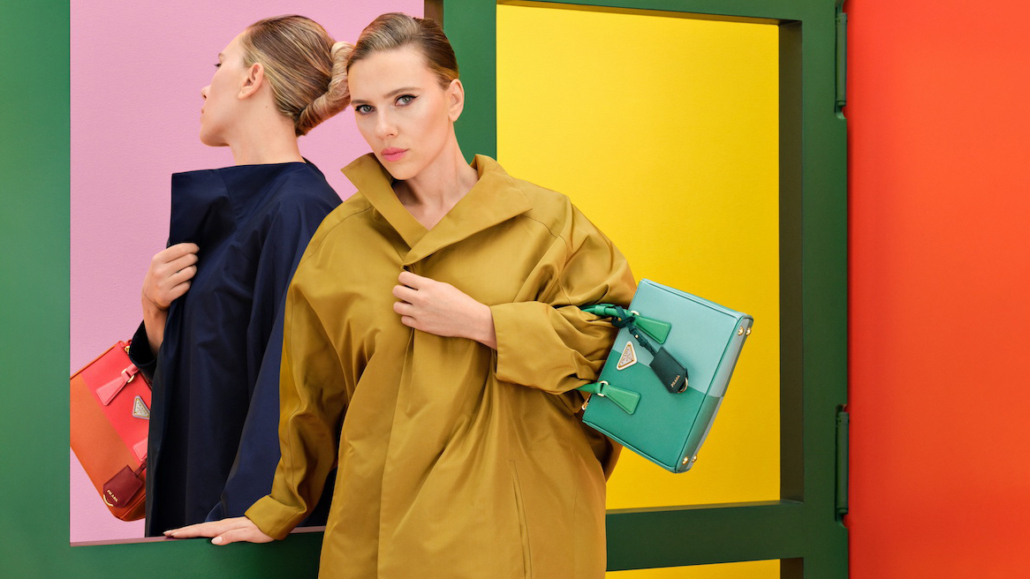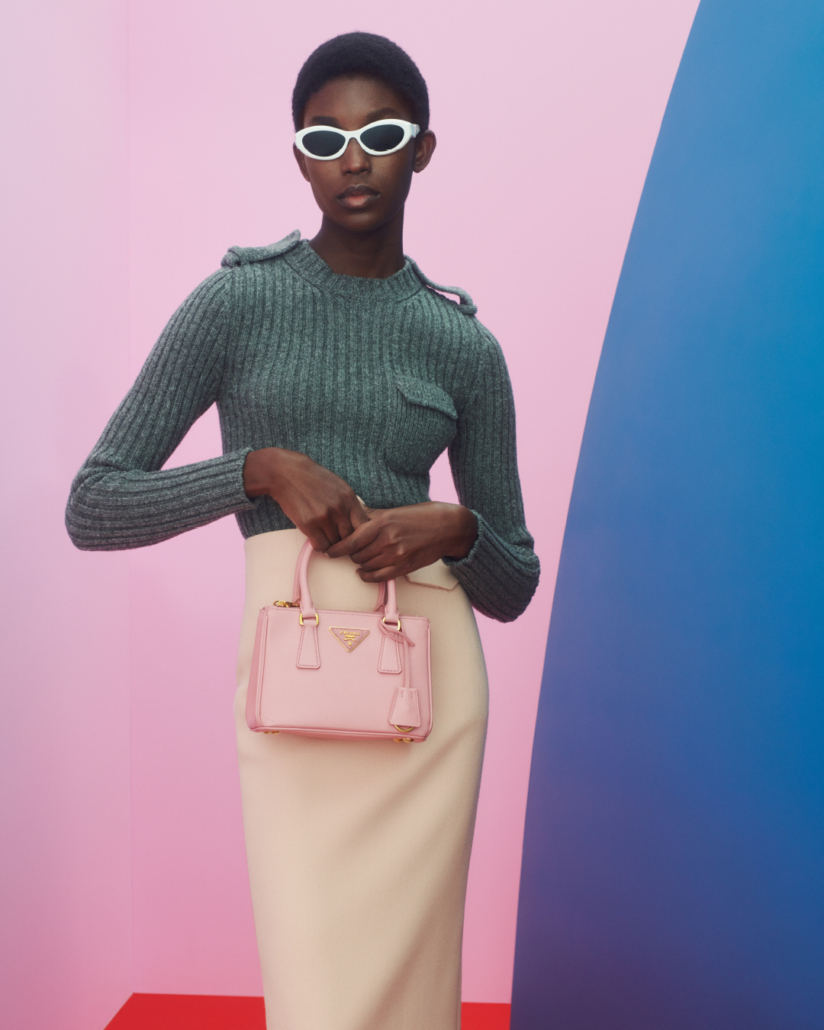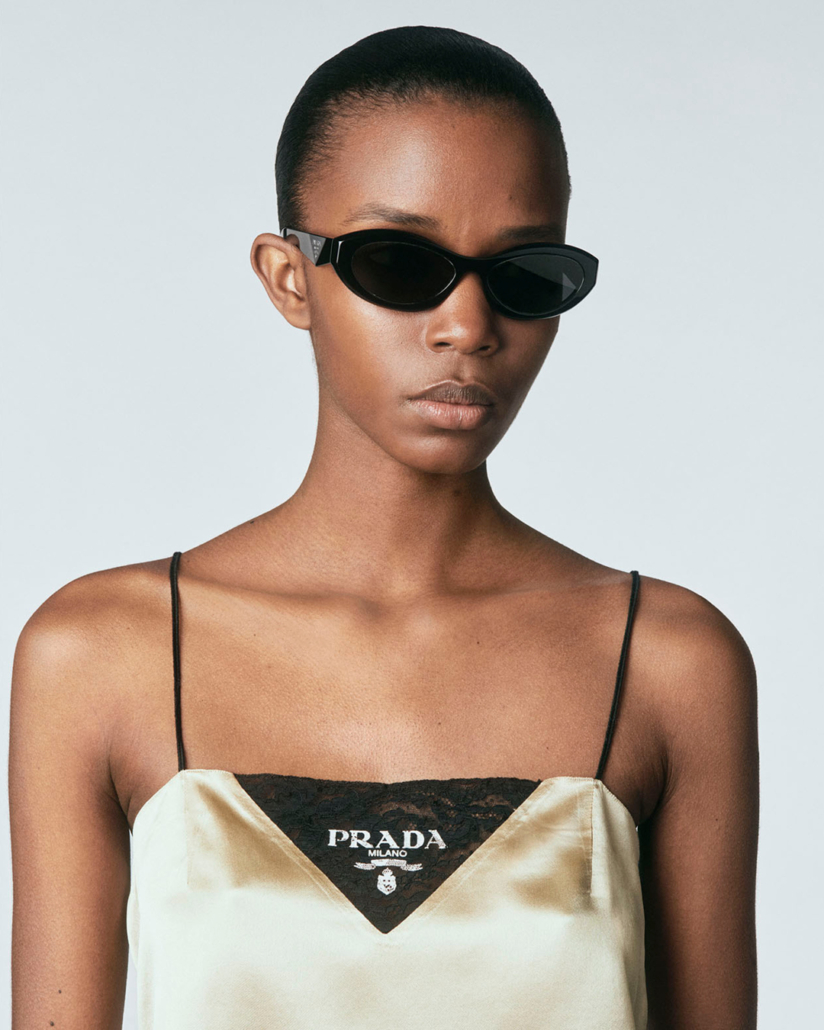Angels don't wear Prada


Sophisticated. Avant-garde. Traditional Italian. PRADA. One of the biggest global luxury fashion brands whose presence we have been graced with since 1913. It all began then will leather goods and brothers Mario and Martino Prada: two Milanese craftsmen. From the offset, the Prada brand endeavored to attract the most refined, tasteful clientele. To this day, these initial attributes of a Prada customer have not altered. Only trends and immense success have changed since then.
Sophisticated. Avant-garde. Traditional Italian. PRADA. One of the biggest global luxury fashion brands whose presence we have been graced with since 1913. It all began then will leather goods and brothers Mario and Martino Prada: two Milanese craftsmen. From the offset, the Prada brand endeavored to attract the most refined, tasteful clientele. To this day, these initial attributes of a Prada customer have not altered. Only trends and immense success have changed since then.


Perhaps in 1919, short 6 years after the company was founded, the Prada brothers realized the brand’s potential. It was then that Prada became the first official supplier to the Italian Royal Household. After this great step towards success, Prada incorporated the House of Savoy’s coat of arms and knotted rope design into its logo. From then onwards, the Milanese elite was captivated by the Prada brand. It was established and continued to expand. The Group then saw a turning point in the development of its activities at the end of the Seventies, when Miuccia Prada, Mario Prada’s granddaughter, launched a partnership with Tuscan businessman and soon to be husband Patrizio Bertelli. Miuccia Prada’s fresh, innovative mind meant that Prada was to be re-invented as a brand. This partnership was destined for success from the very beginning. With Miuccia Prada’s avant-gards and creative approach to fashion, and Patrizio Bertelli’s key business knowledge and experience, they had the foundations to make the brand of Prada an international extravaganza.
Much of what se Miuccia Prada apart from the rest of the fashion world is her seeming disregard for the fashion industry. From 1978, Prada has always demonstrated a fearlessness in trying new styles. Before Prada took over the already established but slowing business that her grandfather had built up over many years, the Prada brand ultimately sold high-end leather goods to the higher class. Miuccia Prada’s vision was different. She wished to inject new life and ultimately a whole new product range into the brand, re-invent-in it for the better whilst the culture, art and Italian heritage remains key to her branding and designs.
Although Mario Prada saw no place for women within the workplace, wishing for his son to take over the business, this responsibility fell into the hands of his youngest granddaughter. Miuccia had no previous fashion experience, but had a PhD in political science, making her an intelligent individual aware of the world around her. Her knowledge of the world perhaps aided her in regard to the dos and don’ts within the fashion industry. It has indeed helped her make correct business decisions, whereby Prada has remained one of the most recognized brands in the world.
It was in 1988 that Miuccia Prada presented her first Womenswear collection at Prada’s headquarters in Milan. This was a time when Mrs. Prada was recognized for her creative talent and ability to create a collection that was simplistic yet effective in its portrayal. For me, all my shows are super sexy. For me, a beautiful woman with a bias dress with diamanté is the least sexy woman alive. I hope, also, to some men.
The particular show determined what the style of Prada was to be; classic, sophisticated, traditional yet avant-garde in its approach to fashion.
Prada’s brand essence is its ability to take their apparel and accessory collections and portray history and current social trends and issues through them. As a brand, Prada stands for freedom of choice for women through a sophisticated but sexy style of dress. Considering the brand as a person, this individual would be professional, sure of themselves and their decisions, someone able to have fun but remain sophisticated. Additionally, they appreciate the arts in all of their beauty and realism. They appreciate nature and tradition, culture and history. As an organization, Prada delineated an aesthetic and cultural relevance, transcendence of pure commerce to the world of art, technology, architecture, and focus on consumer dialogue through retail experience. All of these elements have helped Prada to become one of the most ambitious and trendsetting global luxury brands of modern days. In order to achieve the very established brand image that they have today, Prada have worked globally in order to gain market power within the luxury fashion sector; successfully they have done so. Prada takes great pride in the cultural value of the physical buildings and factories; The Prada Group’s headquarters are spaces where eclecticism of ideas transforms into activities. The buildings preserve people’s creativity and manufacturing stories within their walls. In regard to the brands that Prada own, such as Church’s, they have maintained the core attributes of the brand; all things British heritage and tailoring. This proves as a brand, Prada were not scared to venture into new markets, or change the brands that they acquire to suit the image of Prada. Considering the brand as a product, you would be unable to ignore the overpowering smartness and sophistication that is evident from the offset with Prada products. The brand oozes quality. All apparel, handbags and footwear are made with precision. Tailoring is perfected. Miuccia Prada obviously been a huge influence on the style that the business aim to portray. Her ability to look at the world from an unconventional vantage point allowed her not only to anticipate but, quite often, to set new trends which has been especially useful for the brand. “She never follows anyone else’s lead, just her own original energy. Her collections are completely an expression of herself.” Ultimately, therefore, Prada’s product is Miuccia Prada herself. It could be suggested that Prada symbolises the contrast between what society could be and what it is. Throughout their collections, hard chic, ugly chic and naïf chic are techniques used by Prada’s design team. These styles may have been used to represent the contradictions within society – what is beautiful? What is sexy? What is fashion? For example, in the Prada 365 SS18 Black Nylon campaign, there is a contrast between youth and sophistication, practicality and glamour. This particular advertisement signifies Prada’s ability to experiment with clothing in a way that embodies current and historical societal trends.

Product
Prada is perhaps mostly recognized as a brand whose products ooze elegance, sophistication, innovation and luxury. Their product portfolio is large, ranging from apparel to fragrance. This means that the typical Prada man or woman can live a whole ‘Prada lifestyle. They are able to have a complete wardrobe of Prada, meaning that Prada themselves are present in all the branching markets within the fashion sector. Their products for women seem to be aimed at females aged 25 to 40 who wish to express their personal and professional successes through dress. They will most likely be middle class career led women who have a high amount of disposable income to spend on Prada’s high-priced items. Males who purchase Prada’s products are also the sophisticated and smart kind who wish to portray their status, class and lifestyle through the quality of their luxury clothing. Prada’s menswear apparel and accessories could be viewed as tradition with a twist. Furthermore, the males who wear use Prada products must be confident in themselves and their style.
Place
Aestheticism, art and culture are what Prada take pride in when it comes to their physical stores. The buildings that they distribute their high-quality products from are rich in history and relevance to their subject. Due to Miuccia’s personal interest in the arts, the sites selected by the Prada group – either historic buildings, recovered industrial sites or cutting-edge construction represent an example of corporate philosophy that perceived the workplace as a space where history, culture, nature and respect for people combine generating architectural solution with a strong identity operating in 75 different countries means that there is a vast range of buildings and retailers that sell Prada. Some of these places are Prada stores themselves, net- A-Porter. Selfridges, Harvey Nichols, House of Fraser, My Theresa, Macy’s. These are all stores that sell premium and luxury brands, therefore they are trusted by Prada to sell their products well and appropriately.


Price
High brand value and a renowned, strong brand image is reflected in Prada’s premium prices. They are able to charge high prices for their apparel, accessories and services as they are one of the biggest luxury fashion houses in the world. Consequently, they have repeat purchases and customer loyalty. People will also be more likely to confidently purchase from the company as they use a product line pricing strategy. This is the process used by retailers of separating goods into cost categories in order to create various quality levels in the minds of consumers. Effective product line pricing will usually involve sufficient price gaps between categories to inform prospective buyers of quality differentials, which Prada clearly do. Their handbag and leather goods, perhaps their most recognized product out of their vast range, are priced from £440 to £13.800. Automatically we, as consumers, are faced with an image of high quality due to this price range.
Promotion
Like many of their competitors, Prada mainly use social media to promote their new products, collections and overall brand. This is imperative as at a time when social media has increased demand as fashion trends are delivered to consumers at a faster pace than ever before, Prada needs to be on the ball to remain not only competitive, but current in the fast changing fashion industry. Being the renowned luxury clothing brand that they are. Prada is at the heart of the catwalk and can be seen globally at LFW, PFW, MFW and NYFW. This assures Prada that their products are being broadcasted around the world, in every high-end fashion magazine and to every major fashion influencer/icon of the moment. Numerous short-films or “Cinematographic experiments have been directed and produced for Prada by some of the most famous filmmakers in the world. These were created in order to connect with the consumer on an emotional level. They allow their products to be interpreted in different ways. It has proved a successful promotion strategy, setting Prada aside from their competitors. It also proves to the consumer that they are more than just a fashion brand.


Consumer Segmentation
PRADA is not necessarily for the many, it is for the few. For professional, luxury seeking, money wearing individuals, Prada is the answer. If you own a Prada item, you are likening yourself to their ethos as a brand. This tends to be that good clothes are not only the answer to your problems. But the solution. If you are happy in a well-paid occupation, and you are constantly striving for more, Prada advertisements tend to capture your attention. Their collections verge on twisted tradition, therefore mature, professional consumers who wish to be bold in their actions but remain sophisticated tend to be Prada’s main target audience.
In regard to psychographics, these individuals want more than just clothing. They look for meaning in their choices, whether that be personal, professional or fashion related. Prada is a brand with substance and history. Each item designed and manufactured is made with purpose, and this is attractive to consumers who aim to work to their full potential. When wearing Prada clothing or accessories, consumers are portraying a message to the world around them that they have a life with potential and worth.
Prada targets the wealthy middle and upper class of society, with high disposable income and the desire to dress chic yet contemporary this has, however, changed considerably over the decades since 1913 when Prada was simply a luggage and leather company. Their target audience then were the rich and elite of Milan, whereas now the fashion house targets men and women globally. The brand oozes class and quality, two factors which do not come at a cheap price.
According to Maslow’s Hierarchy of needs, Prada consumers will have reached their esteem needs stage. They are fully satisfied within their work, family and social situation. In a fairly materialistic manner, Prada consumers will now expect respect from their peers and those around them. Once gained, they will be on their way to completing their Hierarchy of Needs, consequently reaching the Self Actualization stage, this is of importance for Prada consumers as they are confident individuals who with for nothing but the best for themselves.
COMPETITOR ANALYSIS
According to the McKinsey Global Fashion Index 2018, 55% of customers buy clothing due to online reviews and a large 74% buy due to social media influence. These are great figures, outlining that the fashion industry is now nothing without the internet. Prada, therefore, are nothing without an online presence. One of Prada’s main competitors is Gucci. With a similar brand essence and personality, the Italian led brands are both at the top of the fashion industry. Gucci, however, are experiencing a phase of extreme popularity and recognition across the globe. Their choice to connect with not only Millennials, but Generation Z: a generation of teens who are slowly but surely building their own momentum, are set to make up 33% of the global population by 2020 Prada and Gucci do share similar characteristics in that they are both high-priced, luxury fashion houses from Italy. However, Gucci’s target market is perhaps slightly younger than that of Prada’s. This is not necessarily a bad thing for Prada, however, in order to remain competitive. Prada, have introduced Prada 365 – promising something nimble, timely, immediate and proactive. Enabling Prada to fully exploit their huge product offering through so many more stories than the ones currently onyxes in the monolithic campaigns it runs each season. This is set to place Prada aside from competitors as it is a completely new convention and hopefully a successful strategy. Another of Prada’s competitors is French fashion house Hermès. Both brands are similar in brand essence and visual identity. They are greatly influenced by art and nature and specialize in leather goods. Hermès was established in 1837 and Prada in 1913. They simultaneously use this as their USP – putting their history and experience in the industry to good use. Prada, however, seem to connect with their consumers on a higher level than Hermès.




